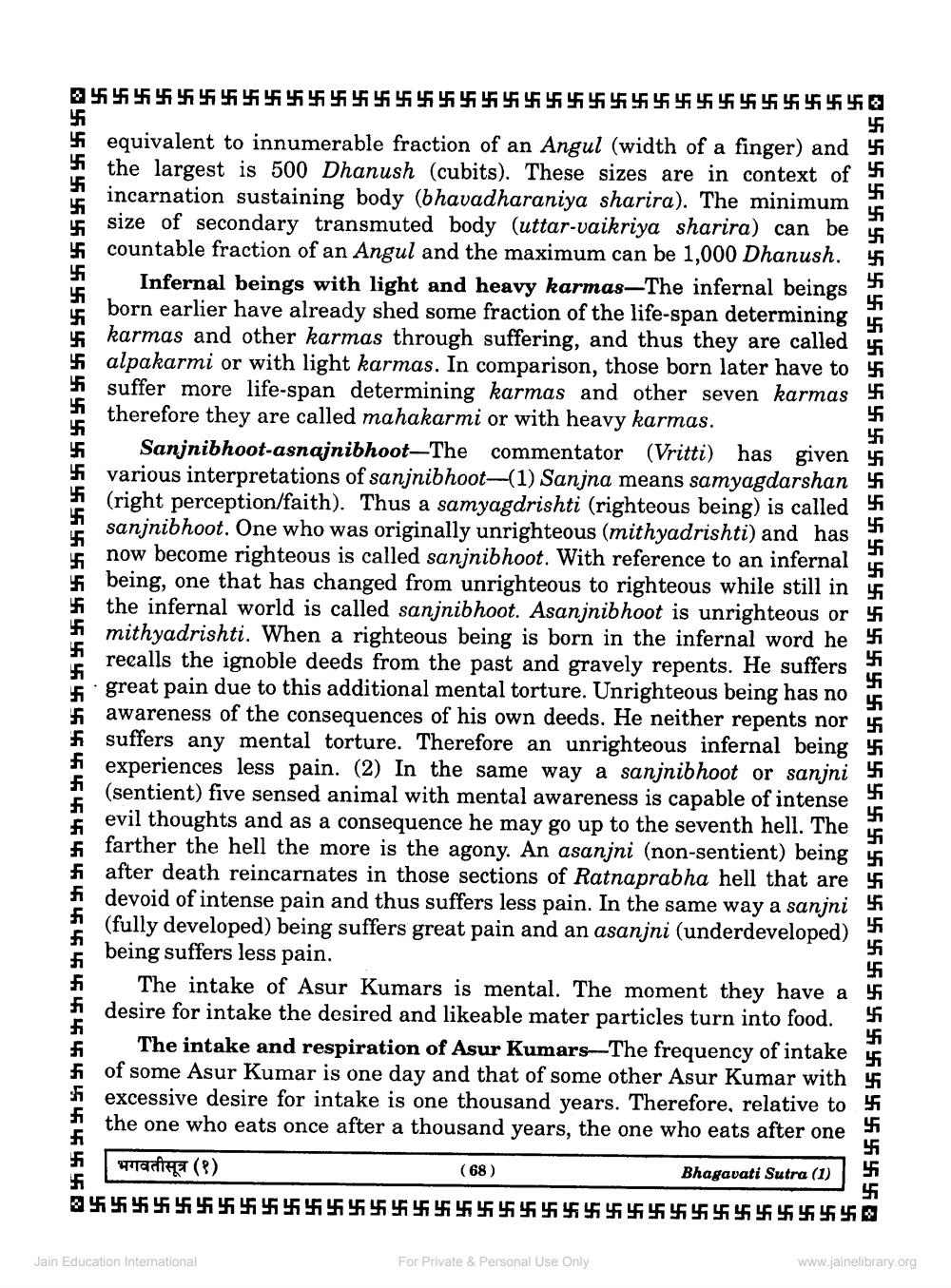________________
24545454545454545414141414141414141414141414141414141414141414141414
听听听听听听听听听听听听听听听听听听听听听听听听听听Fhhhhhhhhhhhhhhhhhh56
41 equivalent to innumerable fraction of an Angul (width of a finger) and
the largest is 500 Dhanush (cubits). These sizes are in context of incarnation sustaining body (bhavadharaniya sharira). The minimum size of secondary transmuted body (uttar-vaikriya sharira) can be countable fraction of an Angul and the maximum can be 1,000 Dhanush.
Infernal beings with light and heavy karmas-The infernal beings born earlier have already shed some fraction of the life-span determining karmas and other karmas through suffering, and thus they are called alpakarmi or with light karmas. In comparison, those born later have to suffer more life-span determining karmas and other seven karmas therefore they are called mahakarmi or with heavy karmas.
Sanjnibhoot-asnajnibhoot-The commentator (Vritti) has given various interpretations of sanjnibhoot-(1) Sanjna means samyagdarshan (right perception/faith). Thus a samyagdrishti (righteous being) is called sanjnibhoot. One who was originally unrighteous (mithyadrishti) and has now become righteous is called sanjnibhoot. With reference to an infernal being, one that has changed from unrighteous to righteous while still in the infernal world is called sanjnibhoot. Asanjnibhoot is unrighteous or 41 mithyadrishti. When a righteous being is born in the infernal word he
recalls the ignoble deeds from the past and gravely repents. He suffers · great pain due to this additional mental torture. Unrighteous being has no awareness of the consequences of his own deeds. He neither repents nor suffers any mental torture. Therefore an unrighteous infernal being experiences less pain. (2) In the same way a sanjnibhoot or sanjni (sentient) five sensed animal with mental awareness is capable of intense evil thoughts and as a consequence he may go up to the seventh hell. The
farther the hell the more is the agony. An asanjni (non-sentient) being i fi after death reincarnates in those sections of Ratnaprabha hell that are
devoid of intense pain and thus suffers less pain. In the same way a sanjni si (fully developed) being suffers great pain and an asanjni (underdeveloped) being suffers less pain.
The intake of Asur Kumars is mental. The moment they have a desire for intake the desired and likeable mater particles turn into food.
The intake and respiration of Asur Kumars-The frequency of intake of some Asur Kumar is one day and that of some other Asur Kumar with excessive desire for intake is one thousand years. Therefore, relative to the one who eats once after a thousand years, the one who eats after one
a$$ $$$$$$$$$$$$ $$$ $ 5555 5 5555555555555 5 555F 听听听听听听听听
Hraciet ()
(68)
Bhagavati Sutra (1)
414141414141414141414141414141414141414141414141414141414141414141414141
Jain Education International
For Private & Personal Use Only
www.jainelibrary.org




